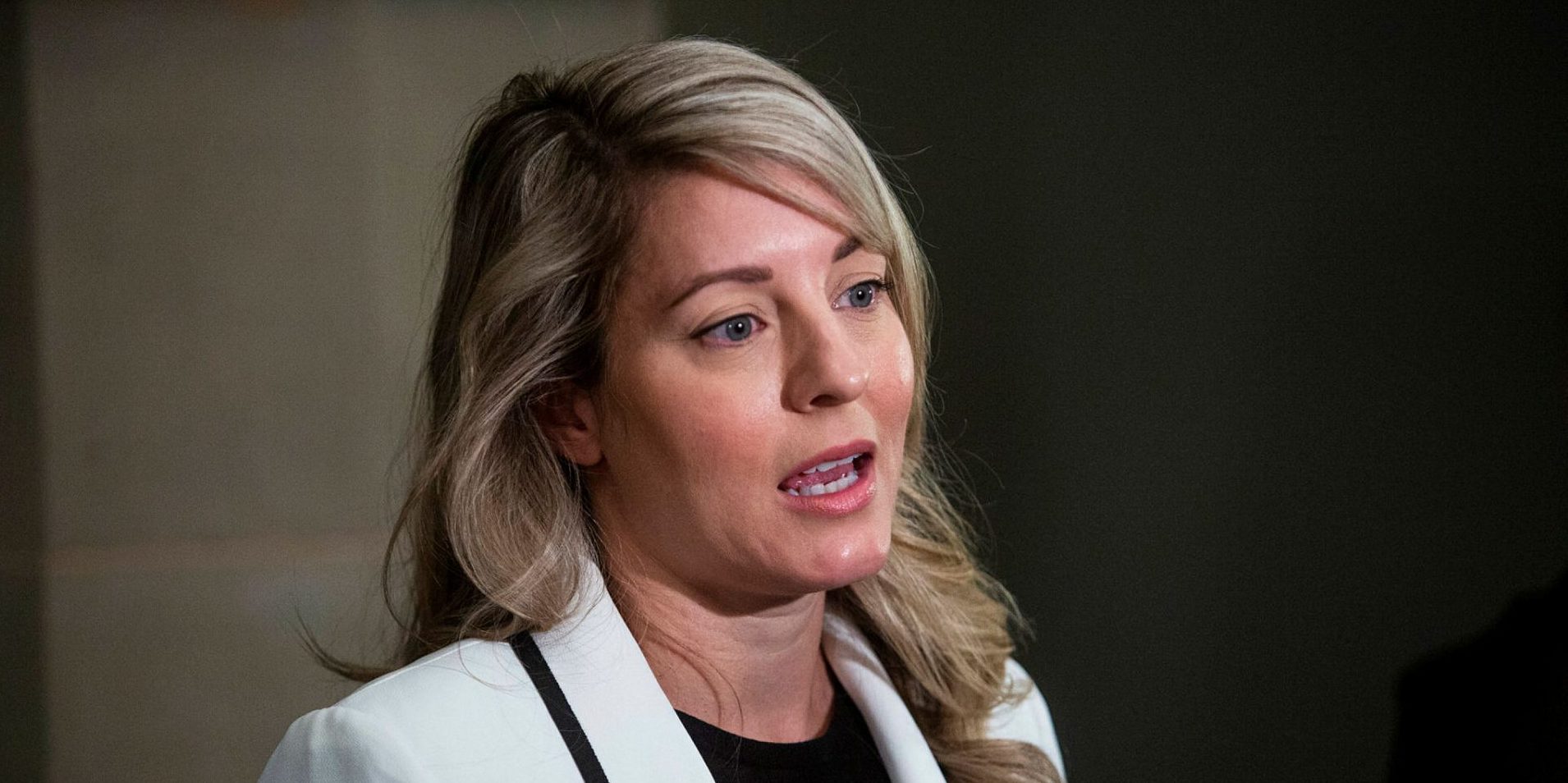U.S. war on science has ‘damaged’ Canada’s research ecosystem, but also offers opportunity, say university advocates

Canada has an opportunity to pick up the slack in North America’s research ecosystem in the wake of sharp drops in support for sciences in the United States, but doing so will require protecting funding measures and streamlining a “broken” international student system, according to university advocates.
“The Americans are a scientific superpower, so to see their science funding gutted means you’re going to hurt research everywhere, and it’s been damaging to research in Canada, as well. Having said that, it’s not the most important problem facing Canadian scientists,” said Gabriel Miller, president and CEO of Universities Canada. “The [Canadian] government has outlined an economic agenda that hinges on the country’s ability to produce new ideas and very talented people, but right now there’s no strategy on the table to do that.”
Recent cuts to science and research in the U.S. under the administration of President Donald Trump have also been terrible for Canada and the rest of the world due to losses in cross-border collaboration opportunities or for funding from American agencies, according to Miller.
In April 2025, preliminary budget documents obtained by The Washington Post indicated the Trump administration’s intent to reduce funding for a variety of science agencies for the fiscal year starting on Oct. 1, 2025. This includes the Centers for Disease Control and Prevention, with a proposed 44-per-cent budget cut, or a reduction in funding from US$9.2-billion to US$5.2-billion; and the National Institute of Health, with a proposed budget cut of roughly 40 per cent, or a drop from US$47-billion to US$27-billion.
Trump’s budget request for fiscal year 2026 also includes major cuts to the National Science Foundation (NSF), from US$9-billion to US$4.1-billion, according to Forbes.
More than 1,500 NSF grants have been terminated since April 18, according to Grant Witness, a non-profit organization that tracks federally funded research grants under the Trump administration.
As the war on science unfolds in the U.S., Miller said that Canada’s universities have spent the last five months trying to adapt. About 60 per cent of Canadian researchers publish their work as part of collaborative, international research teams, he said.

“We were getting reports from universities across the country where researchers had just received letters from agencies in the United States saying, ‘due to decisions by the Trump administration we’re no longer able to honour the grant or partnership that we had with your research team.’ That has a financial consequence for different research teams, but it also has a major implication, frankly, for our ability to contribute to scientific progress,” said Miller. “A huge amount of what we do in science and research is done in tandem with researchers in other countries, and when a player as big as the United States decides that it’s going to take its toys and go home, that inevitably means that the opportunities for Canadian researchers are going to be more limited.”
Miller said that the next couple of months—including the yet-to-be-released federal budget expected on Nov. 4—will be “defining” for science and research in Canada. He argued that Canada can take advantage of the U.S. surrendering its position as a global scientific leader, but that involves protecting existing investments in science and research. Miller said that investments in science and research announced in 2024 mustn’t end up on the chopping block in the coming budget.
In Canada’s April 2024 federal budget, significant investments were proposed over five years to support new scientific talent, including $825-million for enhanced scholarships for master’s and doctoral students and postdoctoral fellows, and an additional $1.8-billion for federal granting councils to boost core research grants for Canadian researchers.
Also in the vein of improving Canada’s research ecosystem, on July 9, Industry Minister Mélanie Joly (Ahuntsic–Cartierville, Que.) and Health Minister Marjorie Michel (Papineau, Que.) announced more than $1.3-billion in funding to support more than 9,700 researchers and research projects across the country. The funding includes $365.6-million to 4,761 scholarship and fellowship recipients through the Canadian Institutes of Health Research, the Natural Sciences and Engineering Research Council of Canada, and the Social Sciences and Humanities Research Council of Canada.
“These researchers aren’t just imagining the future—they’re building it. Their work covers topics such as pandemic readiness and cutting-edge technology, and it reflects the Government of Canada’s commitment to driving innovation, strengthening the economy and tackling the challenges that matter most to Canadians. With this support, we’re empowering the talent that will shape a more resilient, inclusive and globally competitive Canada,” said Joly in a departmental press release.
Another key measure to support science and research in Canada will involve attracting international students. Miller argued that international students face too long a process in obtaining permits to study in Canada.
“We are hemorrhaging talent right now in Canada, and we’re talking about the very people we’re going to need to make new energy projects happen, reinvent manufacturing, [and] be a leader in artificial intelligence. We’re seeing major drops in the number of graduate students enrolled in computer science. We are losing the people that are going to make the difference between success and failure in the new Canadian economy,” he said. “Canada has always had a tough time being competitive when it came to our visa processing system, but that’s now a critical national liability because much of the talent who were coming here have turned away from Canada because of a sense that the country—in the last couple of years—has decided we don’t want them.”
In 2024, Immigration, Refugees, and Citizenship Canada (IRCC) placed a cap on the number of study permit applications that could be accepted for processing as a way to help reduce strain on Canada’s housing and health-care systems, among other services. This measure has reduced the number of international students coming to Canada by about 40 per cent, according to the IRCC.
To help international students in coming to Canada, IRCC’s 2025–26 Departmental Plan, released in June, outlined an intention to spend $427.2-million under the “core responsibility” of facilitating the entry of people wishing to come to Canada temporarily, including international students and temporary workers.
Robert Asselin, CEO of U15 Canada, told The Hill Times that cuts to American granting agencies are “important and consequential,” and also provide a lesson for Canada.

“What we’re seeing in the U.S. shows the perils of basically self-inflicting wounds going forward on fundamental research that is so important for our future, including, obviously, on vaccines, on everything that the world is dealing with in terms of world-pressing problems,” he said. “Hopefully there’s a huge lesson for our decision-makers in Canada that this is the wrong way to go, and that, if anything, research should get more support, more funding, because this is how we’re going to drive economic and national security.”
When asked about how Prime Minister Mark Carney (Nepean, Ont.) is handling science and research in Canada, Asselin, a former Liberal staffer, said Carney’s government hasn’t yet made any pronouncements in that regard, but the upcoming budget will provide an opportunity to send a “signal and vision.”
“I want to see the budget before making comments, but I think, if anything, what’s happening in the U.S. should be a huge warning sign for Canada and the future of research, and—most importantly—the talent that we need to build this country and rebuild the economy in light of the crisis that we’re going through with the U.S.,” he said.
As researchers are potentially driven away from the U.S. due to cuts to science, Canada has an opportunity to draw in that talent, argued Asselin.
“Notwithstanding the investments that were made in the 2024 budget, we’re still far behind,” said Asselin. “When we compare ourselves to the [Organisation for Economic Co-operation and Development] … we’re quite a laggard still.”
In Canada, 14 per cent of people aged 25 to 34 hold a master’s or equivalent degree, which is below the OECD average of 16 per cent, although this represents an increase since 2019 when the share was 11 per cent, according to the OECD.
Canada’s research and development expenditure as a percentage of its gross domestic product was 1.81 per cent in 2022, placing it below the OECD average of 2.73 per cent for the same year.
Dominique Bérubé, vice-president of research and innovation with McGill University, told The Hill Times that American cuts to science and research are damaging the morale among researchers in the U.S.

“What is really changing is the morale, really the morale of the researchers in the United States,” she said, adding that interest among U.S. researchers in relocating to Canada is now more obvious.
However, she argued that even as some U.S. researchers consider moving north of the border, Canada doesn’t have the resources to be an attractive destination, depending on the field of research. As an example, she said that RNA research in Canada doesn’t compare to the U.S.
“McGill has a large scale initiative that has been funded by the Canadian government around RNA, but even that doesn’t compare to the investment that the United States can make in such science,” she said. “We might see some slowdown in some specific domain. [It] might be an opportunity, [but it] depends if we have the capacity.”
Recent actions taken by universities intended to attract global talent to Canada have included the Polaris platform, which is focused on making Quebec a global hub for research talent. Four Quebec universities—McGill, Université Laval, Université de Montréal, and Université de Sherbrooke—formed Polaris in June, and have put together a series of proposed initiatives to help attract talent to the province, such as for Canada to create new research chairs in strategic sectors such as artificial intelligence, health, and biodiversity; and for Canada to offer targeted scholarships to recruit talented PhD students and postdoctoral fellows.
“In these uncertain times, we cannot simply wait to be called upon—we must step up. Our universities are ready to lead,” said Bérubé in a McGill press release announcing the launch of Polaris. “We are putting forward bold, well-structured proposals to support the entire research ecosystem.”
The Hill Times
Canadian universities statistics
- Universities performed $17-billion in research and development in 2023, accounting for 35 per cent of total Canadian research and development.
- University research institutes issued more than 272 patents in 2022.
- Universities welcomed approximately 1.16 million full-time, and 421,000 part-time students to campuses in fall 2023.
- There are more than 7,000 climate researchers at Canadian universities, and more than 70 climate-related research centres and institutes are spread across Canada.
- In 2024, the University of Toronto, University of British Columbia, and McGill University led in scientific publications, with increases in medical, engineering, and computer science research, highlighting a focus on health, technology, and transdisciplinary studies. The University of Toronto maintained its top position with 19,960 publications.
Source: Universities Canada and the Canadian Science Policy Centre






 LICENSING
LICENSING PODCAST
PODCAST ALERTS
ALERTS













